As an independent professional, your business heavily relies on the satisfaction of your clients. It’s a simple truth: if you don’t satisfy your clients, your business will fail. The data backs this up, showing that growing businesses prioritize customer success more than those with stagnant or decreasing revenue.
Successful clients can become your best advocates; research indicates that a significant majority have shared positive experiences with companies. Moreover, retaining existing clients is crucial as it’s 5 to 25 times more expensive to acquire new customers. By focusing on enhancing their experience and gathering meaningful feedback, you can ensure sustainable growth.
Table of Contents
Key Takeaways
- Prioritizing customer satisfaction is crucial for sustainable business growth.
- Retaining existing customers is significantly less expensive than acquiring new ones.
- Positive customer experiences lead to valuable word-of-mouth marketing.
- Effective feedback collection is essential for understanding customer needs.
- Implementing strategies to enhance customer satisfaction can lead to increased loyalty.
Understanding Customer Satisfaction in Today’s Market
In today’s competitive landscape, understanding customer satisfaction is crucial for independent professionals seeking to establish a loyal client base. Customer satisfaction is the cornerstone upon which successful businesses are built, and it’s particularly vital for independents who rely heavily on client loyalty and word-of-mouth referrals.
As we delve into the nuances of customer satisfaction, it’s essential to understand its definition and evolution. Customer satisfaction refers to the degree to which a customer is pleased with the service or product provided by a business.
Defining Customer Satisfaction for Independent Professionals
For independent professionals, customer satisfaction encompasses not only the quality of their work but also the overall experience they provide to their clients. This includes factors such as communication, timeliness, and personalized service. Effective communication is key to ensuring that client expectations are met, and their needs are addressed promptly.
| Key Factors | Description | Impact on Satisfaction |
|---|---|---|
| Quality of Work | Expertise and professionalism demonstrated | High |
| Communication | Clarity, timeliness, and responsiveness | High |
| Personalized Service | Tailoring services to individual client needs | Medium |
The Evolution of Customer Expectations in 2023
The evolution of customer expectations in 2023 has been significant, with 92% of customers more likely to make a repeat purchase after a positive experience. Conversely, over half will switch to a competitor after a single unsatisfactory experience. This shift underscores the importance of delivering exceptional customer experiences across all touchpoints.
Today’s clients expect immediate responses, personalized service, and seamless experiences. The rise of digital platforms has created more informed clients who research extensively before engaging services and benchmark their experiences against the best in any industry. For independent professionals, meeting these evolved expectations requires adopting new technologies and approaches while maintaining the personal touch that sets them apart.
Why Customer Satisfaction Is Critical for Independent Professionals
Achieving high customer satisfaction is essential for the sustainability and growth of independent businesses. In a market where clients have numerous options, ensuring their needs are met is crucial for maintaining a loyal customer base.
The Direct Link Between Satisfaction and Business Growth
Customer satisfaction directly influences business growth for independent professionals. Satisfied customers are more likely to return and refer others, thereby increasing revenue and expanding the customer base. This positive feedback loop is vital for independents who rely heavily on word-of-mouth marketing. Moreover, satisfied customers tend to provide valuable feedback that can be used to improve services and tailor them to client needs.
By prioritizing customer satisfaction, independent professionals can create a stable and growing business environment. This approach not only retains existing clients but also attracts new ones through positive reviews and recommendations.
The Cost of Ignoring Customer Satisfaction
Ignoring customer satisfaction can have severe consequences, including rapid client attrition. Dissatisfied customers rarely complain; they simply leave and share their negative experiences, creating a damaging ripple effect. For independents, even a few dissatisfied customers can significantly impact business stability due to the lack of a large client base buffer.
- The financial impact includes lost revenue and increased marketing costs to acquire new clients.
- The reputational damage can persist, creating barriers to new business opportunities.
- Constantly acquiring new clients is more costly than maintaining existing relationships.
Thus, maintaining high customer satisfaction is crucial for the long-term success of independent professionals.
The Business Impact of Customer Satisfaction
The impact of customer satisfaction on business outcomes cannot be overstated, as it drives both retention and new customer acquisition. Satisfied customers are more likely to return, reducing the costs associated with acquiring new customers and increasing their lifetime value.
Retention and Lifetime Value Benefits
Loyal customers don’t just contribute to a high Customer Lifetime Value (CLV); they also become your company’s biggest promoters, drawing in new customers with their recommendations. To achieve this, customers first need to be satisfied with your services. Any positive review or social media comment is beneficial for your business.
For instance, a satisfied customer can lead to increased retention rates, which in turn can boost your CLV. A simple table can illustrate this:
| Customer Status | Retention Rate | CLV |
|---|---|---|
| Satisfied | 75% | $1,000 |
| Not Satisfied | 25% | $500 |
Word-of-Mouth Marketing and Referrals
Word-of-mouth referrals are considered the gold standard of marketing for independent professionals, creating pre-qualified leads with higher conversion rates and lower acquisition costs. Satisfied clients naturally become advocates who share their positive experiences through personal recommendations, social media endorsements, and formal testimonials.
- For independents in competitive fields, authentic client referrals carry significantly more weight than any form of paid advertising or self-promotion.
- The digital amplification of word-of-mouth through online reviews, social media mentions, and professional network recommendations extends your reach far beyond traditional referral channels.
Key Customer Satisfaction Metrics for Independents
Customer satisfaction metrics play a vital role in helping independents gauge their performance and make informed decisions. By leveraging these metrics, independent professionals can identify areas for improvement and implement strategies to enhance customer satisfaction.
Customer Satisfaction Score (CSAT) Explained
The Customer Satisfaction Score (CSAT) is a widely used metric that measures how satisfied customers are with a specific product, service, or interaction. To measure CSAT, independent professionals can conduct surveys that ask customers to rate their satisfaction on a scale, typically 1-5 or 1-7.
For instance, a survey might ask, « How satisfied are you with our service? » with response options ranging from « Very Dissatisfied » to « Very Satisfied. » The CSAT score is then calculated by averaging the responses and expressing the result as a percentage.
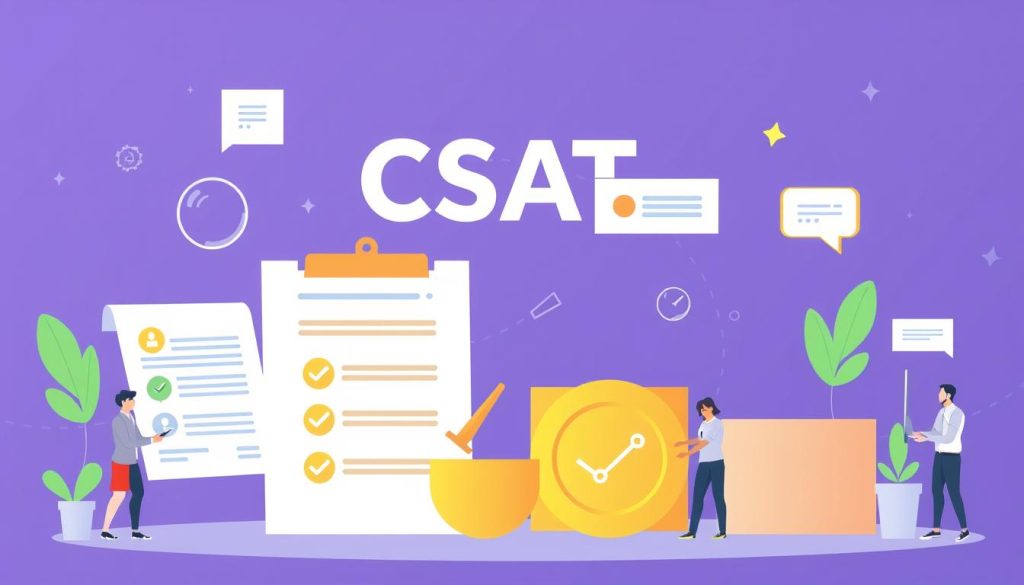
Net Promoter Score (NPS) Implementation
The Net Promoter Score (NPS) is another critical metric that gauges customer loyalty by asking one simple question: « On a scale of 0-10, how likely are you to recommend our service to a friend or colleague? » Respondents are categorized into Detractors (0-6), Passives (7-8), and Promoters (9-10).
NPS is calculated by subtracting the percentage of Detractors from the percentage of Promoters. For example, if 60% of respondents are Promoters and 20% are Detractors, the NPS would be +40.
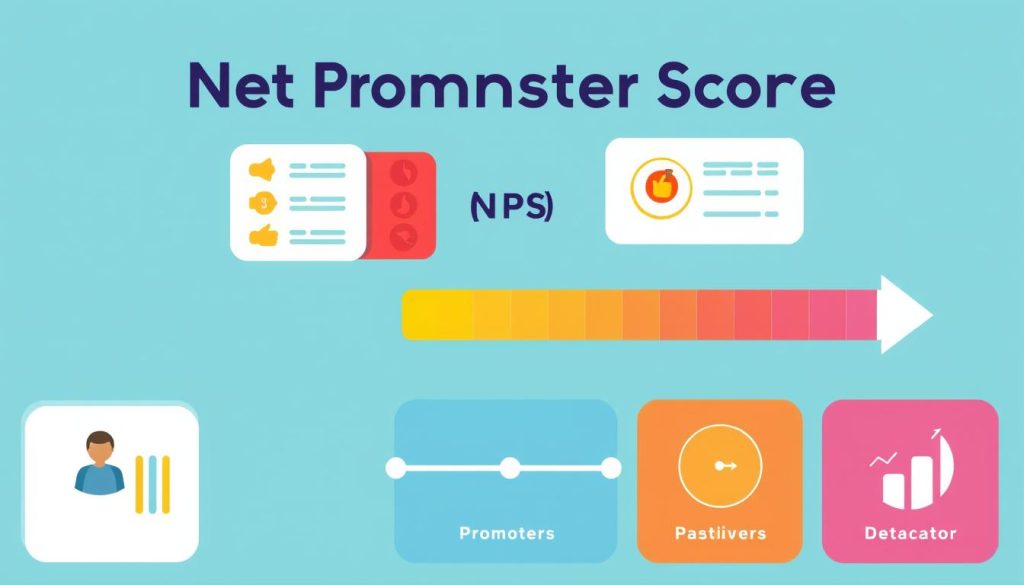
Customer Effort Score (CES) for Service Improvement
The Customer Effort Score (CES) measures how easy it is for customers to interact with a company or service. CES surveys typically ask customers to rate their agreement with statements like « The company made it easy for me to handle my issue » on a defined scale.
By tracking CES, independent professionals can identify friction points in their service delivery and prioritize improvements to enhance the overall customer experience.
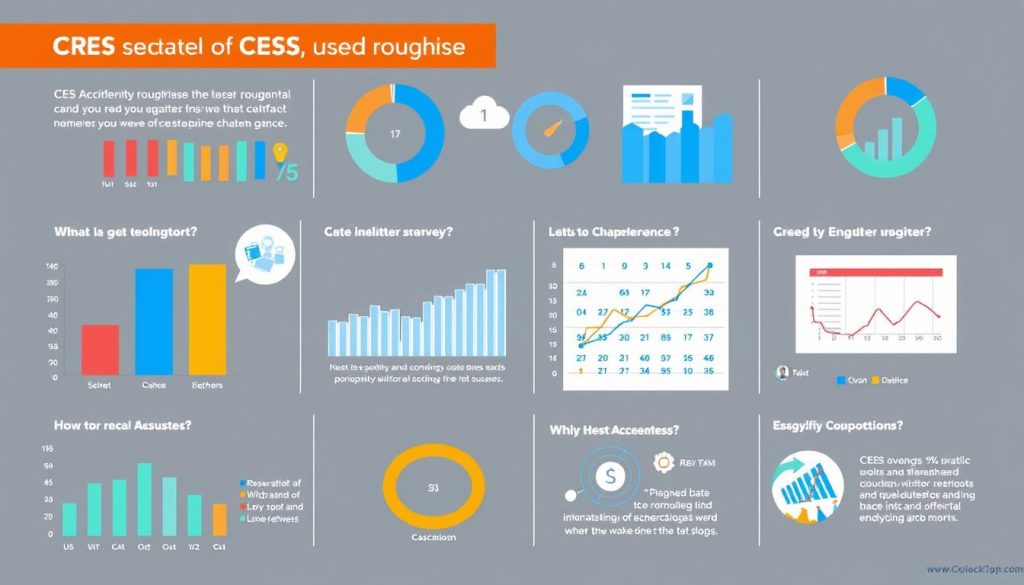
Setting Up Effective Customer Feedback Systems
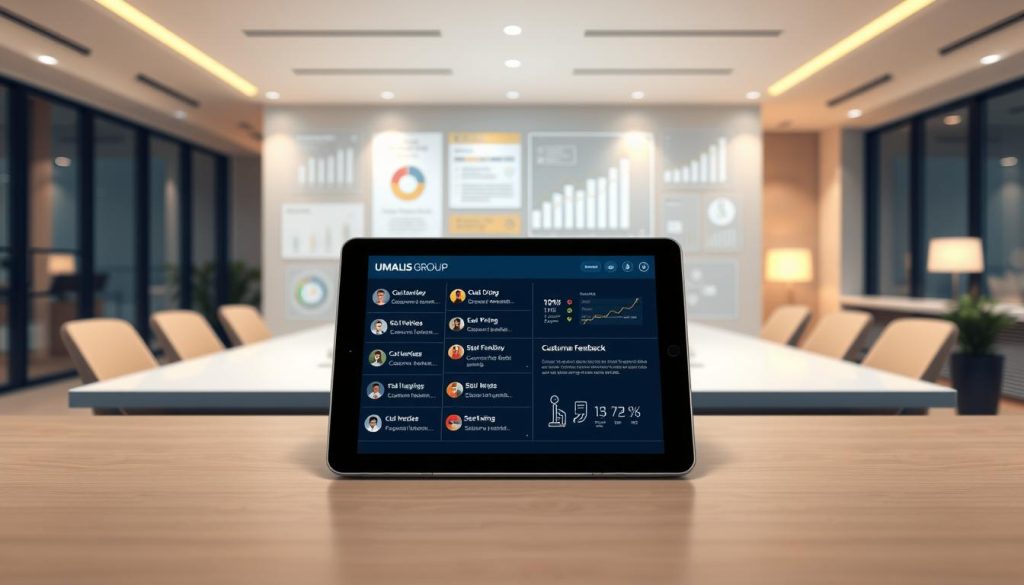
Implementing an effective customer feedback system is crucial for independent professionals seeking to enhance customer satisfaction. As McKinsey & Company aptly puts it, « the three C’s of customer satisfaction are consistency, consistency, and consistency. » This emphasizes the need for a systematic approach to gathering and analyzing customer feedback.
Designing Surveys That Generate Actionable Insights
Designing surveys that yield actionable insights requires careful consideration of the questions asked and the methodology used. Surveys should be concise, clear, and relevant to the customer’s experience. By focusing on specific aspects of the service or product, independents can gather targeted feedback that informs their business decisions. For instance, using satisfaction surveys can help identify areas for improvement and measure customer satisfaction levels.
Timing and Frequency of Feedback Collection
The timing and frequency of feedback collection significantly impact both response rates and the quality of insights received from clients. For project-based independents, collecting feedback at key milestones and upon project completion provides fresh insights. In contrast, relationship-based independents benefit from regular « pulse check » surveys that gauge ongoing customer satisfaction without overwhelming clients. Avoiding the « autopsy approach » by collecting feedback when it still matters is crucial.
- Collect feedback at key project milestones to capture fresh insights.
- Use regular « pulse check » surveys for ongoing relationships.
- Avoid survey fatigue by spacing out feedback requests.
By adopting a consistent and thoughtful approach to customer feedback, independents can foster a culture of continuous improvement, ultimately enhancing customer satisfaction and driving business success.
Personalization Strategies to Enhance Customer Satisfaction
The art of personalization can significantly enhance customer experience, leading to increased satisfaction. In today’s competitive market, understanding and catering to individual client needs is crucial for independent professionals aiming to improve customer satisfaction.
Tailoring Communications to Individual Client Needs
Effective personalization begins with tailoring communications to individual client needs. This involves understanding their preferences, challenges, and objectives to provide relevant and timely information. For instance, a meditation app like Headspace personalizes user experience by asking for preferences during signup, such as experience level or preferred meditation time, and then tailoring notifications and content accordingly. By doing so, businesses can ensure that their communications are not intrusive but rather welcomed by the clients.
A personalized approach to communication can be as simple as addressing clients by their names in emails or as complex as creating customized content based on their interaction history. The key is to make the client feel understood and valued.
Creating Customized Service Experiences
Creating customized service experiences involves adapting core offerings to address each client’s specific challenges, preferences, and objectives. For independents, this might include tailored deliverable formats, personalized reporting dashboards, or custom project methodologies that align with the client’s internal processes.
| Customization Aspect | Description | Benefit |
|---|---|---|
| Tailored Deliverables | Formats adjusted according to client preferences | Enhanced client satisfaction |
| Personalized Reporting | Dashboards customized for client needs | Improved client engagement |
| Custom Methodologies | Project methods aligned with client’s processes | Increased efficiency |
By implementing such customized services, independent professionals can demonstrate a deep understanding of their clients’ needs, leading to higher satisfaction rates.
Proactive Support: Anticipating Customer Needs
To stay ahead, independents must adopt proactive support measures that address customer needs before they arise. This approach not only enhances customer satisfaction but also sets a business apart from its competitors. By anticipating and addressing potential issues, independents can ensure a smoother customer experience, leading to increased loyalty and positive word-of-mouth.
Identifying Common Pain Points Before They Arise
One of the key aspects of proactive support is identifying common pain points that customers may experience. This involves analyzing customer feedback, understanding their needs, and recognizing patterns in their behavior. By doing so, independents can improve customer experience by addressing these issues before they become major problems. Tools like Survicate enable businesses to set up real-time notifications for customer feedback, allowing for swift action.
For instance, if a business knows that its web app will be under maintenance, it can proactively inform its users to manage their expectations. Similarly, if a store is expecting shipping delays due to a high volume of orders, transparency about the delay can prevent customer frustration.
Developing Preemptive Solutions and Resources
Developing preemptive solutions involves creating resources and processes that address common client needs before they become support requests. This can include creating FAQ documents, tutorial videos, and process maps that empower clients to find answers independently. By doing so, independents can not only improve customer satisfaction but also reduce the volume of support requests, thereby streamlining their operations.
- Creating self-service resources such as FAQs and tutorial videos.
- Implementing preemptive communication about potential issues.
- Setting up automated alerts for potential problems.
- Developing solutions based on actual client feedback and support patterns.
By adopting these strategies, independents can significantly enhance customer satisfaction and build a loyal customer base.
Building a Customer-Centric Culture as an Independent
Creating a customer-centric culture is a strategic move that can significantly enhance customer satisfaction for independents. This approach not only improves client relationships but also fosters a positive reputation and encourages loyalty.
To establish a customer-centric culture, independent professionals must first define their customer-focused values and principles. This involves understanding the core values that drive their business and ensuring these values align with the needs and expectations of their customers.
Establishing Customer-Focused Values and Principles
Establishing customer-focused values and principles is crucial for independents. It involves identifying the key elements that contribute to customer satisfaction and incorporating these into the business’s mission and vision. For instance, a commitment to transparency, proactive communication, and empathy can significantly enhance the customer experience.
By training customer service agents to actively listen to customer feedback, provide proactive solutions, maintain transparency, and empathize with customers, independents can ensure a positive customer experience. This not only improves customer satisfaction but also helps in building trust and loyalty.
Training and Empowering Support Staff or Contractors
For independents who work with virtual assistants, subcontractors, or occasional support staff, training in customer-centric practices is essential to ensure consistent customer experiences. Effective training should go beyond processes to include the « why » behind the customer satisfaction approach and the values that guide every client interaction.
- Empowering support personnel with decision-making authority allows them to resolve client issues quickly.
- Creating clear guidelines for common scenarios while encouraging initiative in unique situations balances consistency and flexibility.
- Regular feedback sessions with support staff help refine approaches and improve the client experience.
Leveraging Technology to Improve Customer Satisfaction
Independent professionals can significantly boost customer satisfaction by harnessing the power of technology. By leveraging the right tools and platforms, independents can enhance their understanding of customer needs, streamline their services, and ultimately drive business growth.
Essential Customer Relationship Management (CRM) Tools
For independent professionals, a well-chosen CRM can be a game-changer in managing customer relationships effectively. The best CRM for independent professionals is one that is intuitive, scalable, and integrates well with existing tools. Popular CRM solutions offer features such as contact management, sales pipeline tracking, and customer interaction logging, which help independents stay organized and focused on customer satisfaction.
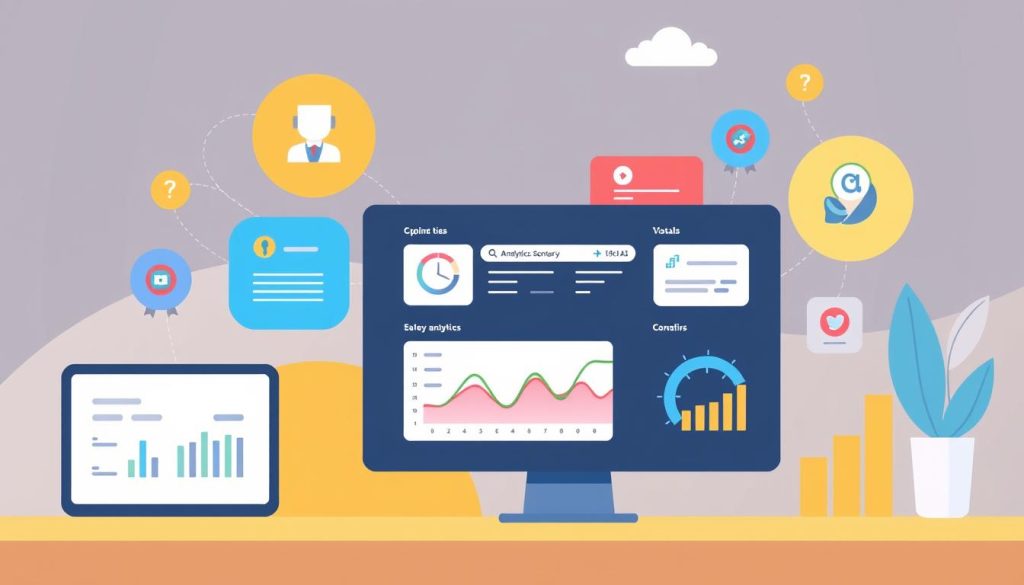
Automation Tools for Consistent Customer Experiences
Automation tools are vital for maintaining consistent customer experiences, especially for independents with limited resources. Customer service automation tools can help independents automate routine tasks, such as follow-up emails or appointment reminders, ensuring timely and consistent communication with customers. This not only enhances customer satisfaction but also frees up time for independents to focus on high-value tasks.
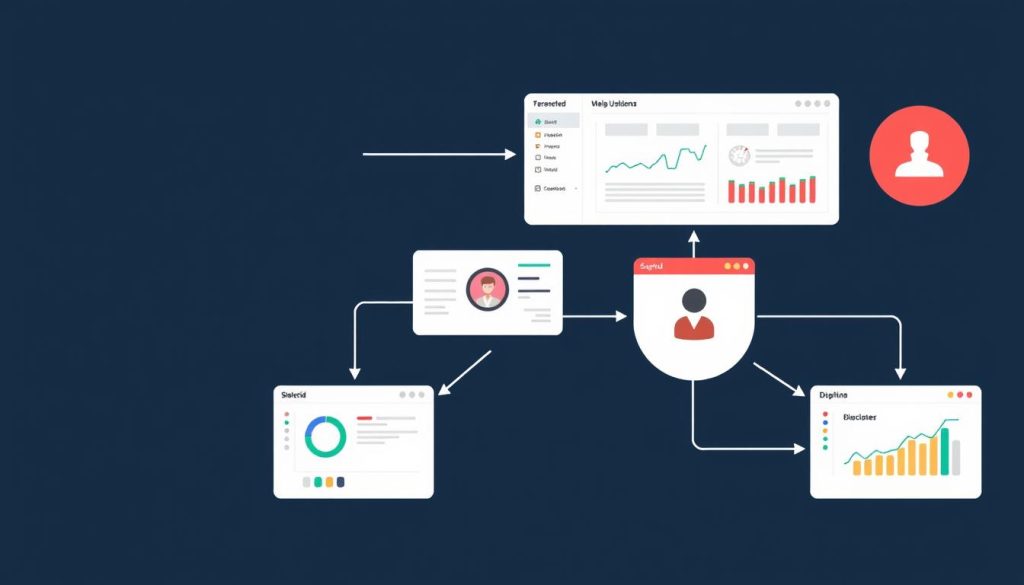
Analytics Platforms for Customer Insight
Analytics platforms play a crucial role in providing customer insights that can drive satisfaction improvements. Customer analytics software helps independents analyze customer data from various sources, such as social media, customer reviews, and support tickets. By understanding customer behavior and preferences, independents can tailor their services to meet customer needs more effectively, leading to higher satisfaction levels.
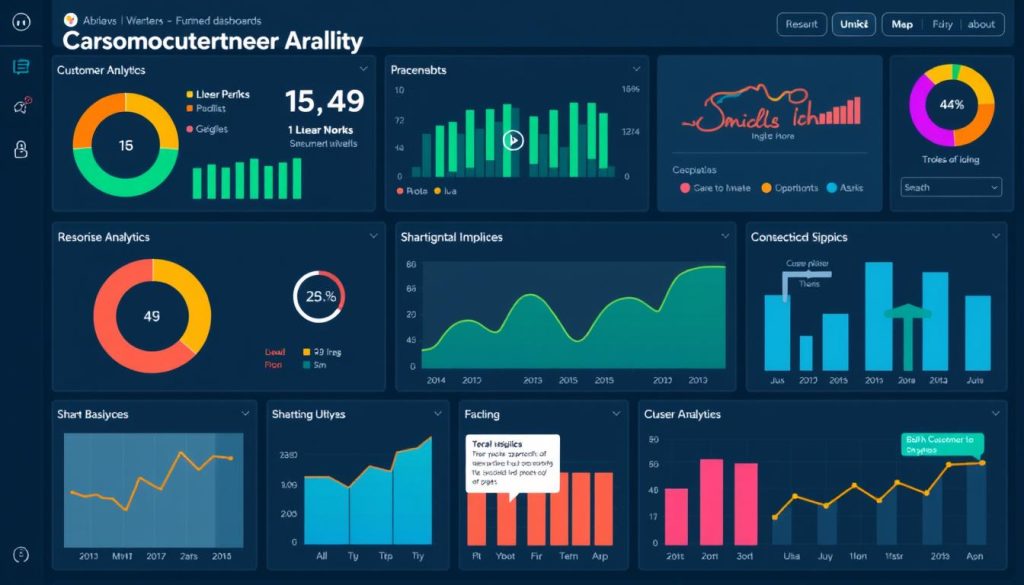
Multi-Channel Support Strategies for Independents

By leveraging multi-channel support strategies, independents can significantly boost customer satisfaction and loyalty. In today’s market, customers expect to interact with businesses through various channels, including social media, email, and phone. Providing support across these channels is crucial for meeting customer expectations.
Balancing Digital and Personal Touchpoints
Independent professionals must strike a balance between digital and personal touchpoints to cater to diverse customer preferences. While digital channels like email and social media offer convenience, personal touchpoints such as phone calls or in-person meetings can provide a more empathetic and personalized experience. By combining these approaches, independents can ensure that customers receive the support they need in their preferred format.
Creating a Seamless Omnichannel Experience
Creating a seamless omnichannel experience is vital for maintaining customer satisfaction. This involves ensuring that clients receive consistent information and service quality regardless of the channel they use. To achieve this, independents should develop systems that maintain context across channels, such as centralized client notes and consistent messaging. Practical approaches include using shared document repositories, communication logs, and standardized response templates to ensure that interactions are cohesive and continuous.
By implementing these strategies, independents can enhance customer service, improve customer satisfaction, and ultimately drive business growth through increased loyalty and retention.
Turning Negative Feedback into Opportunities
Turning potential reputation damage into positive advocacy by effectively managing negative feedback is a crucial strategy for independent professionals. Customer satisfaction is significantly enhanced when feedback, whether positive or negative, is utilized constructively.Effective complaint resolutionnot only resolves issues but also builds trust with customers.
Utilizing social listening tools and popular review sites like G2 can help independents respond to negative feedback promptly. By being transparent about the efforts to fix problems and providing possible solutions, independents can strengthen their relationships with customers. Make sure to address the root cause of the issue to prevent recurrence.
Effective Complaint Resolution Processes
Effective complaint resolution processes are vital for maintaining high levels of customer satisfaction. This involves actively listening to customer feedback, acknowledging their concerns, and providing timely solutions.Personalized responsesandfollow-up actionsdemonstrate a genuine commitment to customer satisfaction. By doing so, independents can turn dissatisfied customers into loyal advocates.
- Respond promptly to negative feedback
- Acknowledge customer concerns
- Provide timely and effective solutions
Converting Detractors into Promoters
Converting detractors into promoters represents the ultimate achievement in complaint resolution. This process involves more than just resolving the immediate issue; it requires rebuilding trust and exceeding expectations in the follow-up. Techniques such aspersonalized follow-up communications, « surprise and delight » gestures, and involving clients in solution development can be highly effective. Make sure to be transparent about the steps taken to prevent similar issues in the future, as this helps in rebuilding confidence and shows that the feedback is valued.
« The most powerful conversions often come from demonstrating that you’ve implemented the client’s feedback to improve your services for all clients going forward. »
By implementing these strategies, independents can not only enhance customer satisfaction but also create a loyal customer base that advocates for their services.
Creating Self-Service Resources for Client Empowerment
Creating self-service resources is a proactive approach to client empowerment and satisfaction. By providing clients with the tools and information they need to succeed, independent professionals can enhance customer satisfaction and foster a more positive experience.
Developing Comprehensive Knowledge Bases
A comprehensive knowledge base is an invaluable resource for clients, offering them a centralized location for information and support. To develop an effective knowledge base, independents should focus on creating content that is both informative and accessible. This can include FAQs, troubleshooting guides, and detailed product information. By leveraging customer feedback, independents can identify common pain points and tailor their knowledge base to address these specific needs, thereby improving customer satisfaction.
- Identify common client questions and concerns through surveys and feedback.
- Create detailed guides and tutorials that address these concerns.
- Organize content in a logical and easily navigable manner.
Interactive Tutorials and Guides
Interactive tutorials and guides provide step-by-step assistance for clients navigating complex processes or learning to use deliverables effectively. Effective formats include video walkthroughs, annotated screenshots, decision trees, and process flowcharts tailored to common client scenarios. The most valuable tutorials address specific pain points identified through client feedback rather than generic overviews of services or deliverables. By utilizing simple screen recording tools and presentation software, independents can create professional-quality tutorials without specialized production skills, thus enhancing the customer experience and promoting satisfaction.
- Use client feedback to identify areas where interactive tutorials can add value.
- Select appropriate formats for tutorials based on client needs and preferences.
- Develop tutorials that are concise, clear, and easy to follow.
By investing in self-service resources such as comprehensive knowledge bases and interactive tutorials, independent professionals can significantly enhance customer satisfaction and empower their clients to achieve their goals more effectively.
Case Studies: Customer Satisfaction Success Stories
Enhancing customer satisfaction is crucial for the long-term success of independent professionals. By implementing targeted strategies, these professionals have not only improved customer satisfaction but also seen significant business growth.
Transforming Client Relationships
Independent consultants have transformed their client relationships by focusing on customer satisfaction. For instance, by collecting and acting on customer feedback, Turum-burum quickly fixed the user checkout experience, minimizing crucial steps in Intertop’s checkout funnel. This proactive approach led to a decrease in checkout bounce rate by 13.35% and an increase in average revenue per user (ARPU) by 11.46%. Such measurable outcomes demonstrate the direct impact of customer satisfaction initiatives on business performance.
Measurable Results from Satisfaction Initiatives
The case studies highlight specific, measurable business outcomes resulting from customer satisfaction initiatives. These outcomes include improved retention rates, project expansions, referral generation, and revenue growth. The diversity of results showcases how satisfaction improvements can address different business goals, such as reducing client acquisition costs or increasing project scope and value.
| Business Outcome | Metric Improvement |
|---|---|
| Checkout Bounce Rate | -13.35% |
| Average Revenue Per User (ARPU) | +11.46% |
| Customer Retention | +X% |
These success stories provide compelling evidence for prioritizing customer satisfaction as a core business strategy. By leveraging customer feedback and implementing satisfaction initiatives, independent professionals can drive business growth and achieve long-term success.
Implementing Your Customer Satisfaction Strategy
A well-crafted customer satisfaction strategy is essential for independents to stay competitive in today’s market. To achieve this, it’s crucial to have a clear plan that outlines specific actions and metrics for success.
Creating a 90-Day Action Plan
Developing a 90-day action plan is a practical first step in implementing your customer satisfaction strategy. This plan should include specific initiatives aimed at enhancing customer experience, such as improving response times to customer inquiries or implementing a new feedback system. By focusing on achievable goals within a short timeframe, independents can quickly see improvements in customer satisfaction scores.
As noted by a customer satisfaction expert, « Continually monitoring your NPS and CSAT scores gives you access to data that helps you track customer satisfaction over a long period. » This data is crucial for refining your strategy and making informed decisions.
Measuring Progress and Adjusting Your Approach
Measuring progress against your customer satisfaction goals is vital for refining your approach. This involves combining quantitative metrics like CSAT and NPS with qualitative insights from customer feedback. Regular measurement intervals, such as monthly or quarterly, provide the necessary feedback loop to adjust your strategy.
- Measuring progress against your satisfaction goals provides the feedback loop necessary to refine your approach and maximize results.
- For independents, effective measurement combines quantitative metrics with qualitative insights from customer conversations and feedback.
- Regular measurement intervals provide the right balance of responsiveness and trend visibility.
By continually assessing and adjusting your strategy based on satisfaction data, you can ensure that your efforts are yielding the desired outcomes and make adjustments as needed to stay on track.
Conclusion: Building Long-Term Success Through Customer Satisfaction
Customer satisfaction is the cornerstone of a successful independent practice, driving growth, retention, and referrals. By implementing the strategies outlined in this guide, independent professionals can significantly enhance their client relationships and, ultimately, their business success.
The importance of customer satisfaction cannot be overstated. It represents not just a metric but a fundamental business philosophy that drives long-term success for independents. By focusing on customer satisfaction, independents can create a virtuous cycle where satisfaction drives retention, referrals, and reputation—the three pillars of sustainable growth.
The competitive advantage of superior client satisfaction is particularly powerful for independents. Being more responsive, personalized, and client-focused than larger competitors allows independents to stand out in a crowded market. As client expectations continue to evolve, a commitment to continuously improving satisfaction will ensure that your independent practice remains relevant, valued, and successful.
- Implementing effective customer satisfaction strategies helps measure efforts, improve customer experience, and increase loyal customers.
- By turning customer-centered insights into action, independents can turbocharge the customer experience—and their customer satisfaction scores.
- Creating experiences so valuable and distinctive that clients become advocates is key to building a sustainable business.
By making customer satisfaction a core value rather than just a business metric, independents create the foundation for sustainable success that withstands competitive pressures and market changes. Remember, customer satisfaction isn’t a destination but a journey of continuous improvement. Each enhancement creates new opportunities to further differentiate your services and deepen client relationships.
In conclusion, by prioritizing customer satisfaction and implementing the strategies discussed, independent professionals can achieve long-term success and build a loyal client base that drives their business forward.
FAQ
How can independent professionals measure their Net Promoter Score (NPS)?
To measure NPS, independents can conduct surveys asking clients how likely they are to recommend their services, typically on a scale of 0-10. The NPS is then calculated by subtracting the percentage of detractors from the percentage of promoters.
What is the ideal frequency for collecting feedback to improve service?
The ideal frequency for collecting feedback varies, but it’s often beneficial to gather feedback after significant interactions or projects, and at regular intervals (e.g., quarterly) to ensure continuous improvement.
How can personalization enhance user experience for clients?
Personalization can significantly enhance user experience by tailoring communications and services to individual client needs, making interactions more relevant and engaging.
What role does Customer Effort Score (CES) play in improving service?
CES measures how easy it is for clients to resolve their issues or get answers to their questions. By minimizing effort required from clients, independents can improve overall satisfaction and loyalty.
How can independents effectively balance digital and personal touchpoints?
Balancing digital and personal touchpoints involves understanding client preferences and using a mix of channels (e.g., email, phone, social media) to engage with them in a way that feels most convenient and personal.
What are some effective complaint resolution processes?
Effective complaint resolution processes involve prompt acknowledgment, thorough investigation, and timely resolution of complaints, ensuring that clients feel heard and valued.
How can independents turn detractors into promoters?
Turning detractors into promoters requires actively listening to their concerns, resolving their issues promptly, and following up to ensure satisfaction, thereby demonstrating a commitment to their happiness.
What is the significance of creating self-service resources for clients?
Creating self-service resources, such as comprehensive knowledge bases and interactive tutorials, empowers clients to find answers and solutions on their own, enhancing their experience and reducing support queries.
How can CRM tools help in managing client relationships?
CRM tools help independents manage client interactions, track preferences, and analyze data to provide more personalized and effective service, ultimately strengthening client relationships.
Why is it important to continuously measure and adjust customer satisfaction strategies?
Continuously measuring and adjusting strategies ensures that independents remain aligned with evolving client needs and preferences, maintaining high levels of satisfaction and loyalty.





